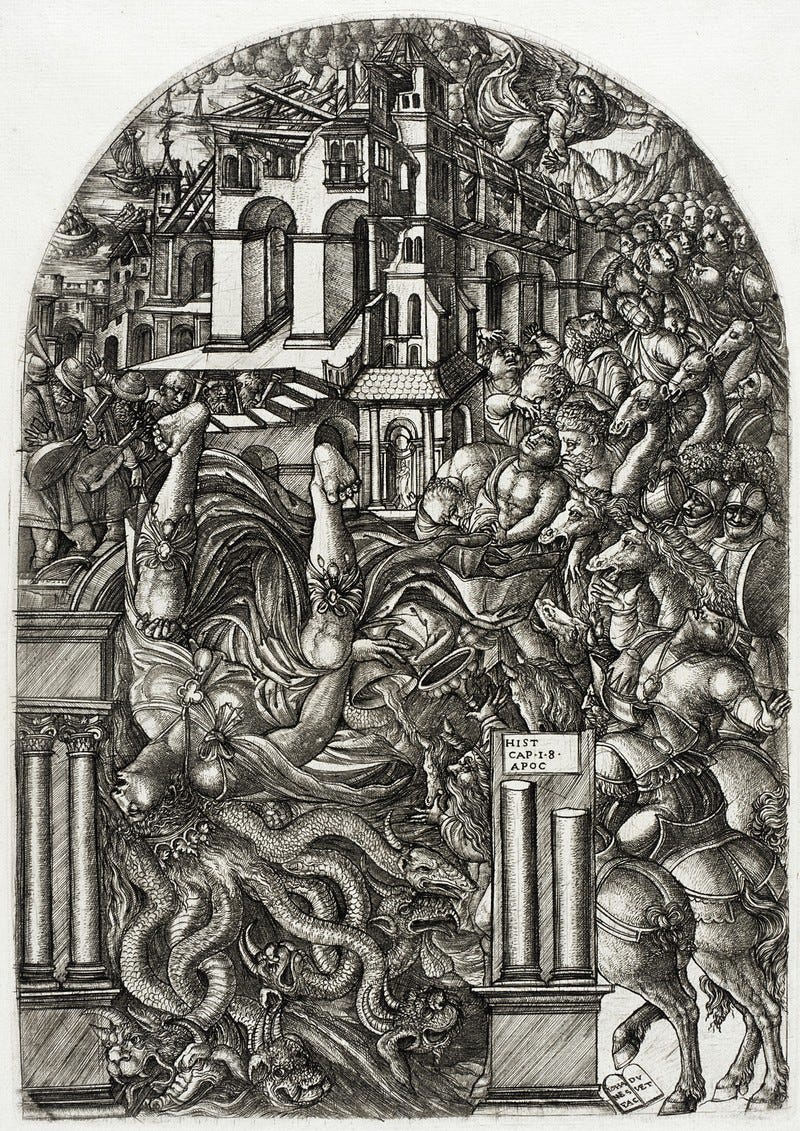Horror Vacui
4 min readThe Fall of Babylon, by Jean Duvet. Apocalypse series, circa 1555.
Horror Vacui, “fear of empty space”, is a term used in visual art to describe a tendency of filling the entire surface of an artwork with details. It avoids blank states. Victorian Age art is a clear example of this style, which is usually related to unstable, troubled minds.
It is an interesting concept— for a “physical” vacuum cannot exist. It makes no sense. There’s always something.
Aristotle has this idea. In a void, something set in motion wouldn’t stop anywhere. Why should it stop here and not there? Anything would move ad infinitum unless something more powerful got in its way.
Art and Design have moved the opposite direction (minimalism). Yet, our minds are still trapped in this idea: there’s something wrong with the vacuum.
An example
Out of nowhere, on a morning like any other, our Kanban board got nearly emptied. The system (my team) would not receive more inputs (new tasks to develop), so we were almost in a state of blankness. Emptiness. Nothing to do. No movement. Stalling. Horror Vacui.
It felt weird. I felt weird. Why did it feel so… odd? Shouldn’t I be feeling great? I had spare time. I was able to choose what to do next.
For something to stop, there needs to be some friction against another element from the system — We know that, and Aristotle knew that. Kinetic energy converts into thermal energy. Work becomes heat.
And our system was stopping, so friction needed to be there. And we don’t like friction, right? We want things to move as smooth as possible.
Where was this friction coming from? Were we running out of projects? No more work? Nothing else to do? No more business? Is the team getting stalled? Are we losing money? All these questions crossed my mind.
This feeling was actually fear. Vacuum cannot exist, right? Yet, our board was almost there. It should be moving ad infinitum, so if it was stalling, there had to be something more powerful stopping it.
Nah. Nothing was wrong. We were scared of the unknown. We just had slack time. No urgent work was required at that moment (for half a day or so — not a big deal). We had free time. This should be the norm, right?
We were faced with an unexpectedly tricky question:
In the absence of the Urgent, how do we determine what the Important is?
Should I tackle tech debt introduced during last week? Should I start this great online course everyone is talking about? Should I watch this conference talk that enlightened my coworker? Should I give a sneak peek to other team’s work, to understand what problems are they solving?
Too many questions. Please, anyone, answer them for me!
I always say that the urgent overtakes the important. That a healthy system should be able to work on the essential things, not only the immediate.
Yet, at the moment of truth, we failed to see such opportunity and requested moar work. It is more comfortable this way.
We became Victorian artists: we made our business out of busyness. No busyness, no business. More is better because it means affluence. At least it did — centuries ago!
Not busy? Not at “full capacity”? Not “being productive”? Then something must be wrong. This is so deep in our minds we feel stressed when it doesn’t happen.
“Feed me.”
“Don’t make me think.”
“Take me to a known state. It’s uncomfortable out here.”
Next time, I’ll embrace this horror vacui, enjoying the opportunity, and I’ll try to focus on the important. Whatever it may be.
